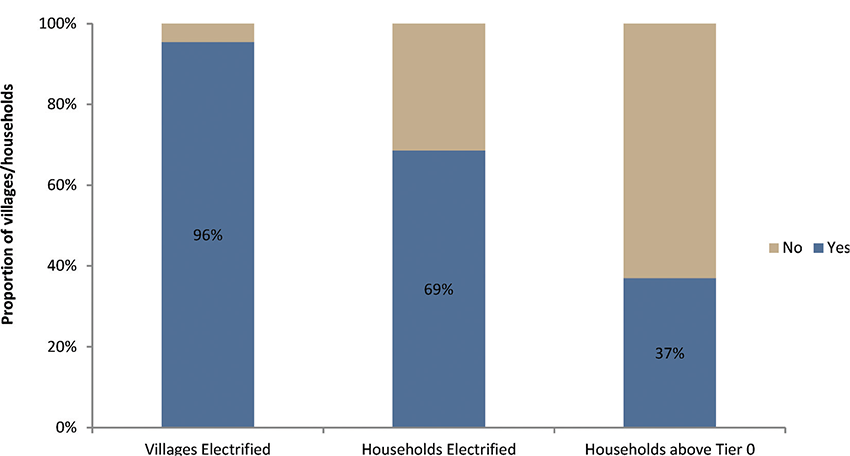Paper
Guiding Action: A User Centric Approach to Define, Measure, and Manage Electricity Access
Abhishek Jain
June 2019 | Energy Transitions
Suggested Citation: Jain, Abhishek, and Tauseef Shahidi. 2019. “Guiding Action: A User Centric Approach to Define, Measure, and Manage Electricity Access.” Economics of Energy & Environmental Policy, Vol. 8, No. 1: 19-32. https://doi.org/10.5547/2160-5890.8.1.ajai
Overview
This paper, published in the Economics of Energy & Environmental Policy, assesses the critical role of electricity in contributing to overall human development and well-being. It argues for multidimensional, multi-tier, and multi-locale energy access in order to better the definition, monitoring, and management of electricity access.
The inequity of energy access—the lack of access to modern sources as well as the wide variation in consumption—remains one of the most pressing global problems today. As of 2015, about one billion people across the world still did not have access to electricity. The mere presence of electricity in a household does not explain the comprehensive experience of the end user, which is determined and influenced by factors such as duration of electricity supply, its quality, reliability, etc. This paper proposes an end-user-centric approach that will help to guide planning, execution, course correction, and operations, to achieve universal energy access.
Electricity Access in Six Major States of India (2015)

Source: Access to Clean Cooking Energy and Electricity: Survey of States (ACCESS) 2015
Key Highlights
- Multidimensional and multitier frameworks such as the Multidimensional Energy Poverty Index (MEPI), Total Energy Access (TEA) and the Access to Clean Cooking Energy and Electricity: Survey of States (ACCESS) argue for the use of a more comprehensive approach to defining, measuring, man¬aging, and ultimately delivering energy access for all. Data monitoring and management are necessary to operationalise such approaches.
- Under the multidimensional approach, the situation of end users is assessed across a range of dimensions on a graded scale instead of a binary classification of haves or have-nots.
- The availability of data to assess the access situation is the biggest challenge in developing countries. However, designing robust survey instruments and leveraging technology can address this constraint to a large extend.
- Human development is the core objective of improving the definition, measurement, and management of energy access for universal coverage.
- Definition itself can play a critical role in shaping policy objectives and policy targets, and thus shape the direction of policy action. For instance, for over a decade, rural electrification in India was limited to village-level electrification, which meant household electrification was never in focus.
- The measurement and monitoring programs should eventually include enterprises and community spaces and monitor dimensions beyond just connection, in order to provide multidimensional electricity access supporting overall development of deprived populations.
- Keeping in mind the socio-economic outcomes, policy makers, electricity regulators, and service providers can utilise the multidimensional, multi-tier, multi-locale approach to achieve universal energy access faster and with optimised costs.
A multidimensional framework could help inform the actions of the respective stakeholders, which is the biggest reason why governments and donors should consider investing resources in multi-dimensional assessment of energy access.







